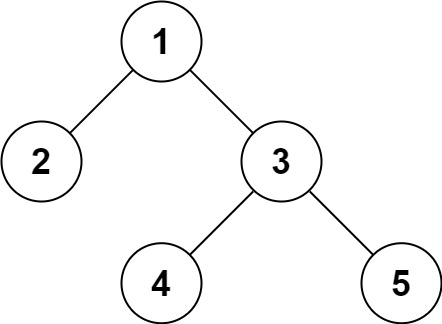Tree - Serialize and Deserialize Binary Tree
All diagrams presented herein are original creations, meticulously designed to enhance comprehension and recall. Crafting these aids required considerable effort, and I kindly request attribution if this content is reused elsewhere.
Difficulty : Easy
Recursion
Problem
Serialization is the process of converting a data structure or object into a sequence of bits so that it can be stored in a file or memory buffer, or transmitted across a network connection link to be reconstructed later in the same or another computer environment.
Design an algorithm to serialize and deserialize a binary tree. There is no restriction on how your serialization/deserialization algorithm should work. You just need to ensure that a binary tree can be serialized to a string and this string can be deserialized to the original tree structure.
Example 1:
1
2
Input: root = [1,2,3,null,null,4,5]
Output: [1,2,3,null,null,4,5]
Solution
Serialize
The solution for serialize is very simple. We will perform PreOrder traversal and save the values in an array. The only important part is to append NONE for all the left and right child for leaf node.
1
2
3
4
5
6
7
8
9
10
11
12
13
def serialize(root):
result = []
def dfs(root):
if not root:
result.append("NONE")
return
result.append(str(root.val))
dfs(root.left)
dfs(root.right)
print(result)
return result
The output is interesting to understand. The diagram of the tree is given above in Example 1.
1
['1', '2', 'NONE', 'NONE', '3', '4', 'NONE', 'NONE', '5', 'NONE', 'NONE']
Deserialize
The only important logic for deserialize is the base case. Once we see NONE, we will assume that it’s the end and return None. Then move the pointer by 1
1
2
3
4
5
6
7
8
def deserialize(result_arr):
pointer = 0
def dfs():
nonlocal pointer
if result_arr[pointer] == 'NONE':
pointer+=1
return None
Create the root node. Increment the pointer.
1
2
root = TreeNode(val = int(result_arr[pointer]))
pointer +=1
Create nodes for left and right sub-trees.
1
2
3
4
root.left = dfs()
root.right = dfs()
return root
return dfs()
Final Code
Here is the full code.
1
2
3
4
5
6
7
8
9
10
11
12
13
14
15
16
17
18
19
20
21
22
23
24
25
26
27
28
29
30
31
32
33
# class TreeNode:
# def __init__(self, val=0, left=None, right=None):
# self.val = val
# self.left = left
# self.right = right
def serialize(root):
result = []
def dfs(root):
if not root:
result.append("NONE")
return
result.append(str(root.val))
dfs(root.left)
dfs(root.right)
return result
def deserialize(result_arr):
pointer = 0
def dfs():
nonlocal pointer
if result_arr[pointer] == 'NONE':
pointer+=1
return None
root = TreeNode(val = int(result_arr[pointer]))
pointer +=1
root.left = dfs()
root.right = dfs()
return root
return dfs()
